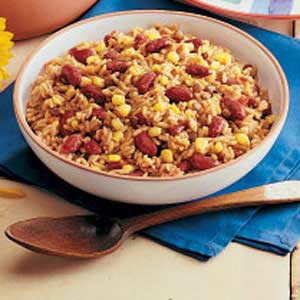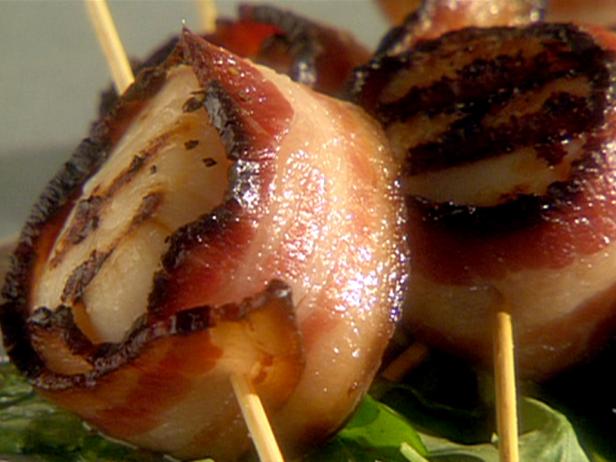Indulge in the Southern charm of Brown Sugar Chess Pie, a delectable treat that captivates taste buds with its creamy, velvety filling encased in a flaky, golden-brown crust. This classic dessert, originating from the kitchens of the American South, has been passed down through generations, earning its place as a beloved comfort food. With its rich, caramel-like flavor and hints of nutmeg, Brown Sugar Chess Pie is a symphony of simple ingredients that come together to create an extraordinary taste experience. In this article, we present two cherished recipes: a traditional Brown Sugar Chess Pie and a delightful twist featuring a pecan praline topping. Whether you prefer a classic indulgence or a touch of nutty crunch, these recipes will guide you in crafting this timeless pie that embodies the essence of Southern hospitality.
Check out the recipes below so you can choose the best recipe for yourself!
BROWN SUGAR CHESS PIE
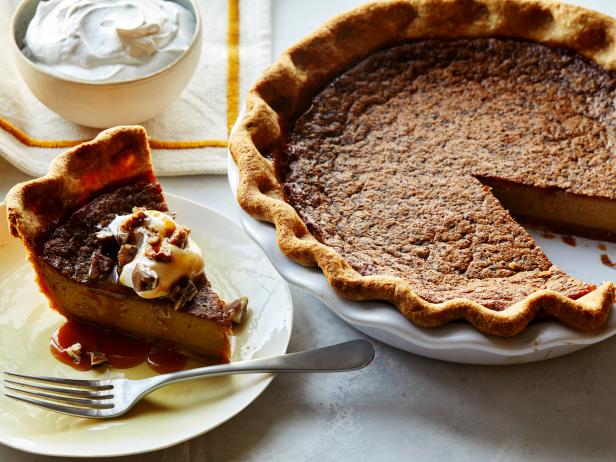
Chess pie is a classic Southern pie, with a filling thickened with egg yolks and cornmeal, which gives it a slightly (and delightful) gritty texture amidst the silky-smooth custard. I like to combine this classic with a flavor that they do the very best in the South: caramel-y brown sugar. This pie is delicious on its own, but I love it decked out with lots of toppings -- whipped cream, caramel sauce, and some kind of candied nuts.
Provided by Erin Jeanne McDowell
Categories dessert
Time 5h
Yield One 9-inch (23-centimeter) pie
Number Of Ingredients 16
Steps:
- For the cornmeal pie dough crust: In a medium bowl, whisk the flour, cornmeal, and salt together to combine.
- Add the cubes of butter, tossing them through the flour until each piece is well coated. Cut the butter into the flour by pressing the pieces between your fingers, flattening them into big shards. As you work, continue to toss the butter through the flour, recoating the shingled pieces. If you have warm hands, you may want to use a pastry cutter (sometimes I do a few passes with pastry cutter, then toss the mixture with my hands before continuing). Take care to ensure that all the cubes of butter are fully coated in flour as you work.
- For a flaky crust, continue cutting the butter into the flour just until the pieces of butter are about the size of walnut halves. Or, for a mealy crust, work the mixture together until the pieces of butter are about the size of peas.
- Make a well in the center of the flour mixture. Add the ice water to the well. (Different types, or even brands, of flour hydrate differently, so it is difficult to give a precise amount that will work every time; Consider the base amount given as a solid jumping-off point, knowing that you will almost always need to add more.) Using your hands, toss the flour with the water to start to mix the two together (this begins to combine them without creating too much gluten). As the flour begins to hydrate, you can switch to more of a kneading motion -- but don't overdo it, or the dough will be tough. Then add more water, about 1 tablespoon (15 grams) at a time, until the dough is properly hydrated. It should be uniformly combined and hold together easily, but it shouldn't look totally smooth. Dough that is too dry may have a sort of "dusty" appearance, or pockets of unhydrated flour; it will not hold together and will look crumbly. Dough that is too wet will feel sticky or tacky to the touch, and it is often smoother and/or lighter in color than a properly hydrated dough.
- Form the dough into a disk and wrap tightly in plastic wrap. Refrigerate for at least 30 minutes before using.
- Lightly dust your work surface with flour. I use about a handful of flour to dust the surface and the dough, and I often don't need to use any more during rolling. Use just enough flour to prevent the dough from sticking, as using too much can make the dough tough or dry.
- Begin to roll out the dough by positioning the rolling pin in the center of the dough, then applying gentle pressure and pushing it away from you. Return the pin to the center and do the same, this time bringing the pin towards you. Although this method may feel a bit awkward at first, it's useful for learning how to apply gentle, even pressure to the dough rather than just pressing down while rolling the pin back and forth, which can often make the crust too thin at the edges and thicker in the center.
- Rotate the dough frequently as you work, or even flip it over. That will help keep the dough from sticking and also allow you to feel the thickness to determine if there are thicker areas you haven't hit evenly with your pin yet. As the dough round (or rectangle) gets bigger, use the pin to help you move it around -- roll it up around the pin, then unfurl it in a slightly different spot. Rather than focusing on the diameter of the rolled- out dough, focus on the thickness. When the dough is rolled out evenly to the correct thickness (1/8 to 1/4 inch (3 to 6 mm)), it should be the correct size and about 1 inch wider than the pie plate. Of course, you can always use your pie pan as a guide while you roll, placing it lightly on top of the dough to help see when you're getting close.
- Transfer the dough to the pie plate. To use the rolling pin to transfer the dough, place it at the end of the dough farthest from you, wrap the edge of the dough up around the pin, and roll the pin toward you, wrapping the dough around the pin. Position the far edge of the dough to the far edge of a 9-inch pie plate and gently unfurl it into the plate. Then lift up the dough gently at the edges and gently push it into the base of the pie plate.
- Once you've lined your pie plate with dough, trim away any excess dough, ideally ending up with 1/2 inch (1 cm) of excess dough all the way around the edges. I like to use scissors for this task -- they make it easy to cut cleanly. Then tuck the excess dough under itself so the edges of the crust are flush with the outer rim of the pie plate. Press lightly to seal the dough all around. This technique serves to give you thicker dough around the edges of the pie, which makes it easier to crimp, and this final folded effect at the edges makes the edges of the crust look (and taste!) particularly flaky when you slice it.
- Cover with plastic wrap and refrigerate the pie plate lined with dough until chilled, 15 minutes to 1 hour if time allows.
- Dock the bottom of your crimped and well-chilled pie crust all over with a fork.
- Cut a square of parchment paper that is slightly larger than the pie plate. Place it on top of the pie shell and fill with pie weights (make sure you use enough weights to come up to the inner rim of the pie plate). The crust is now ready to be parbaked.
- Parbake the crust: Preheat the oven to 425 degrees F (220 degrees C) with a rack in the lower third of the oven, preferably with a baking steel or stone on it. Place your docked/weighted crust on the rack and bake for 15 to 17 minutes, until the edges appear set and are just starting to lightly brown. Remove the pie from the oven and use the parchment paper to lift the weights out of the pie shell. Return the crust to the oven and bake until the bottom appears set, 2 to 3 minutes more.
- To make the egg wash, whisk the egg and cool water together to combine.
- As soon as the pie crust comes out of the oven from parbaking, brush the crimped edges of the dough with a thin layer of the egg wash to form a sort of "seal" on the base of the dough.
- Let the crust cool completely before filling.
- For the Brown Sugar Chess Pie: Preheat the oven to 325 degrees F (165 degrees C) with a rack in the lower third (preferably with a baking steel or stone on it).
- In a medium bowl, whisk the brown sugar and cornmeal together to combine. Add the eggs and egg yolks and whisk until the color has lightened noticeably, 1 to 2 minutes. Add the milk, melted butter, vanilla, and salt and whisk until well combined.
- Place the parbaked pie crust on a parchment-lined baking sheet and pour the filling into the crust. Transfer to the oven and bake until the crust is deeply golden and the custard is set around the outside edges but is still slightly jiggly in the center, 35 to 40 minutes.
- Cool the pie completely, then chill for at least 1 hour before slicing and serving. Serve topped with whipped cream, caramel sauce, and some kind of candied nuts, if desired.
CLASSIC CHESS PIE
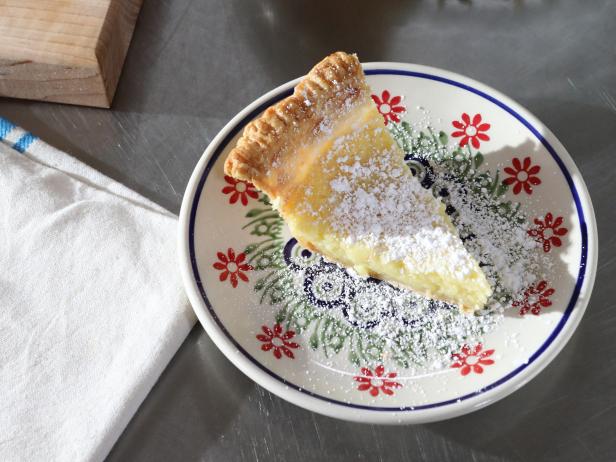
Classic chess pie filling consists of butter, eggs, flour and sugar. There are many variations, however, and I am partial to my spins! In this recipe, cornmeal and buttermilk add a boost in texture and tang that brings me home to my Southern roots. The oven temperature is lowered to cook the egg-based custard low-and-slow, making for a smooth and more tender filling.
Provided by Food Network
Categories dessert
Time 4h30m
Yield 8 servings
Number Of Ingredients 13
Steps:
- Preheat the oven to 400 degrees F.
- For the crust: Whisk together the flour and salt in a large bowl. Remove the butter from the freezer and work it into the dough by hand, working quickly to keep the butter as cold as possible. (Cold butter flakes are the secret to a flaky crust.) Be sure to leave pea-size butter flecks visible. Slowly pour the ice water into flour mixture. Using your hands, mix until a dough starts to form. Be careful not to overmix. It should appear shaggy but cohesive.
- Lightly dust a clean work surface with flour. Using a rolling pin, roll the dough out into a 1/4-inch-thick circle, 12 inches in diameter. Transfer the dough round to a 9-inch pie dish. Press the dough down into the dish. Tuck any overhanging dough back under the rim, using your hands to create a thick outer edge. Use a fork to crimp the edges or your hands to pinch for a more professional look. Place in the freezer to chill for 15 minutes.
- Remove from the freezer. Using a toothpick or a fork, poke holes in the bottom of the crust. Line the crust with parchment paper and fill the raw pie shell with pie weights or dried beans. Blind bake for 15 to 20 minutes until it begins to lightly brown. Remove from the oven and remove the parchment and pie weights.
- Beat the egg and 1 tablespoon water in a small bowl. Brush the edges of the crust with the egg wash. Return to the oven and bake until light golden, about 10 minutes. Remove and let cool completely before filling. Lower the oven temperature to 325 degrees F.
- For the filling: Whisk together the melted butter, sugar and eggs in a large bowl. Once combined, stir in the buttermilk, cornmeal, vanilla and salt. Pour the custard into the cooled pie crust. Bake for 50 to 55 minutes, checking the pie after 30 minutes and tenting the crust with foil if it is browning too quickly. When the pie is ready, a skewer inserted into the center should come out clean and it should reach an internal temperature of 200 degrees F.
- Cool on a wire rack for 3 to 4 hours. If cut while too warm, the filling will not be set. Once cooled, sprinkle with confectioners' sugar, cut into slices and serve.
BROWN SUGAR PIE I
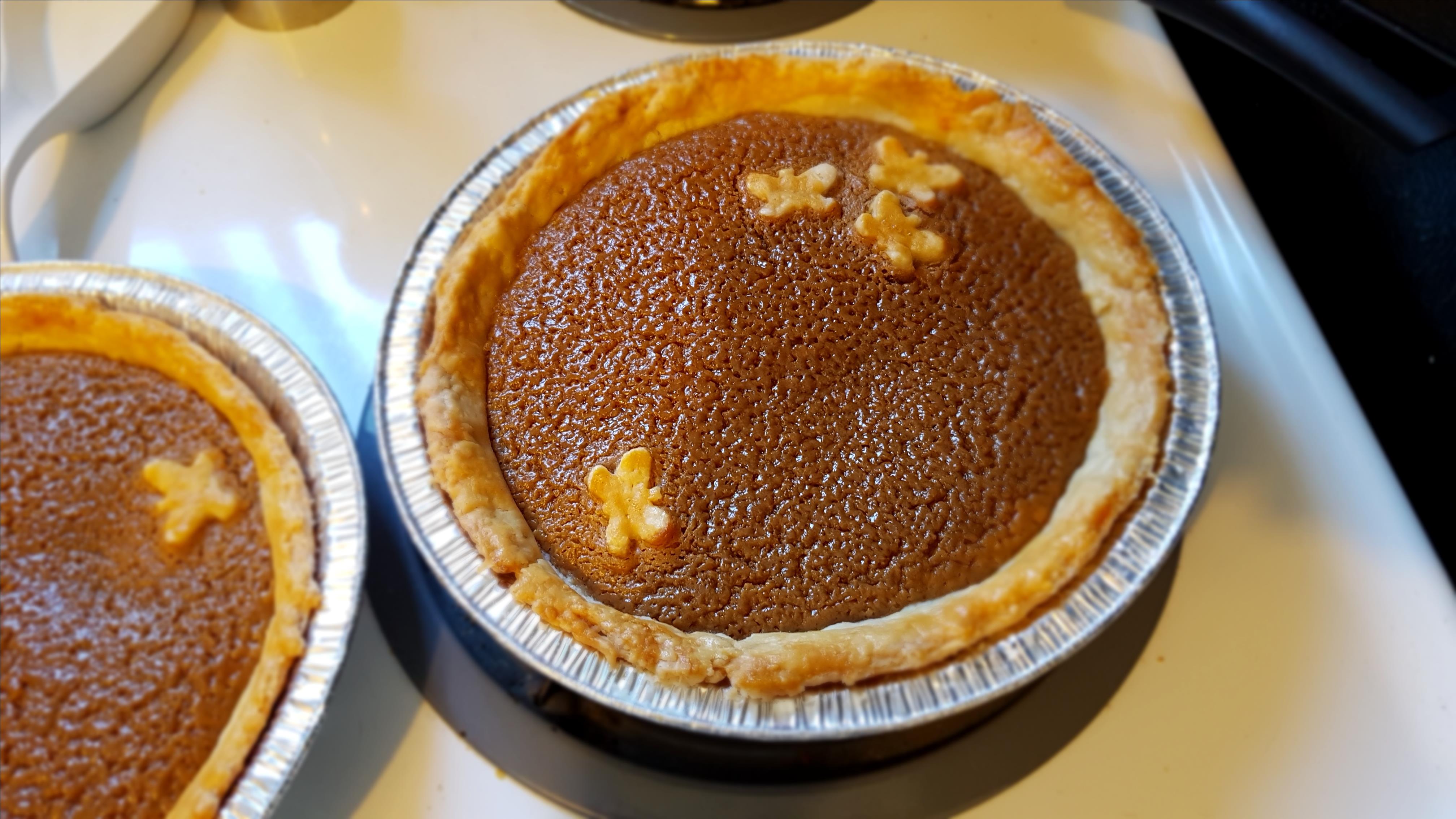
Brown sugar pie is a basic pie from Quebec, Canada. In French, it is Tarte au Sucre Brun. Delicious!!
Provided by Suzanne
Categories Desserts Pies Vintage Pie Recipes Chess Pie Recipes
Time 1h
Yield 8
Number Of Ingredients 6
Steps:
- Preheat oven to 400 degrees F (200 degrees C).
- In a saucepan, combine flour and sugar. Stir in milk, butter, salt and vanilla. Cook, stirring constantly, until mixture comes to a boil. Pour into an unbaked pie shell.
- Bake at 400 degrees F (200 degrees C) for 5 minutes. Reduce heat to 350 degrees F (175 degrees C) and continue baking for 25 minutes.
Nutrition Facts : Calories 346.1 calories, Carbohydrate 63.2 g, Cholesterol 29 mg, Fat 9.4 g, Fiber 0.2 g, Protein 3.9 g, SaturatedFat 5.8 g, Sodium 251.9 mg, Sugar 58.2 g
BROWN SUGAR PIE II
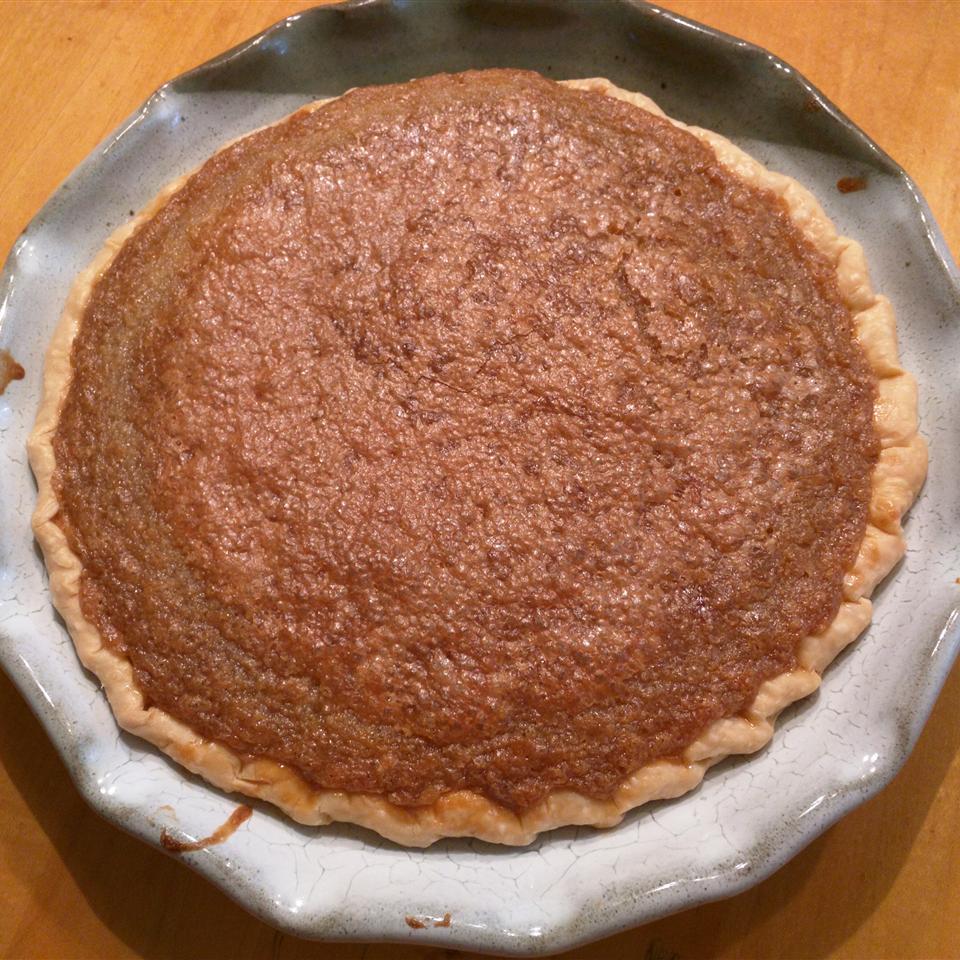
This is a brown sugar pie!!!
Provided by Donna
Categories Desserts Pies Vintage Pie Recipes Chess Pie Recipes
Time 1h5m
Yield 8
Number Of Ingredients 7
Steps:
- Preheat oven to 325 degrees F (165 degrees C.)
- In a large bowl, combine brown sugar, white sugar, flour, eggs, milk and vanilla. Beat until smooth. Mix in the melted butter. Pour filling into pie crust.
- Bake in the preheated oven for 35 to 40 minutes, or until filling is set.
Nutrition Facts : Calories 277.1 calories, Carbohydrate 40.1 g, Cholesterol 77.3 mg, Fat 12.8 g, Protein 1.9 g, SaturatedFat 7.7 g, Sodium 108.5 mg, Sugar 39.5 g
MARGARET'S MAPLE SUGAR PIE
There's no maple syrup in this pie recipe, and that's not a mistake. Instead this brown sugar chess pie, injected with a shot of whiskey, will remind you of maple candies thanks to its rich caramel notes.
Categories Bon Appétit Pie Thanksgiving Fall Milk/Cream Whiskey
Yield Make one 9-inch pie
Number Of Ingredients 17
Steps:
- Dough:
- Pulse sugar, salt, and 1 1/4 cups flour in a food processor to combine. Add butter and pulse until the largest pieces are pea-size. Add lard and pulse again until mixture resembles coarse meal. Transfer to a large bowl and drizzle in 3 Tbsp. ice water; mix with a fork to combine. Knead 3-4 times to bring dough together (only a couple of floury spots should remain). Flatten dough into a 1/2"-thick disk, wrap in plastic, and chill until firm, at least 2 hours.
- Let dough sit at room temperature 5 minutes to soften.
- Roll out dough on a lightly floured surface to a 12" round, rotating often and dusting with more flour as needed to prevent sticking. Transfer to a 9" pie dish. Lift up edges and allow dough to slump down into dish. You should have about 1" overhang. Fold edges under and crimp. Freeze 15 minutes.
- Meanwhile, preheat oven to 425°F. Lightly coat a sheet of foil with nonstick spray and place in pie crust, coated side down, pressing into bottom and up sides. Fill with pie weights or dried beans and bake until edges of crust are pale golden, 15-20 minutes. Carefully remove foil and weights and continue to bake crust until bottom is golden and looks dry, 12-18 minutes more. Transfer dish to a wire rack and let crust cool.
- Filling and assembly:
- Preheat oven to 325°F. Heat brown sugar, cream, and butter in a large heatproof bowl set over a large saucepan of barely simmering water, stirring constantly, until butter is melted, sugar is dissolved, and mixture is smooth (do not let bowl touch water). Remove bowl from heat and stir in whiskey and vanilla. Whisking constantly, add eggs one at a time, incorporating completely after each addition. Add flour and salt and whisk just until smooth. Scrape filling into crust and place on a foil-lined rimmed baking sheet.
- Bake pie until filling is browned all over, puffed around the edges, and still slightly wobbly in the center, 45-55 minutes. Transfer dish to a wire rack and let pie cool at least 4 hours before slicing (the longer you can wait, the easier it'll be to slice; do not refrigerate).
- Serve pie topped with whipped cream.
- Do Ahead
- Dough can be made 3 days ahead; keep chilled, or freeze up to 1 month. Crust can be baked 1 day ahead; store tightly wrapped at room temperature. Pie can be baked 1 day ahead. Let cool, then store loosely covered at room temperature.
Tips:
- For a creamier filling, use full-fat milk instead of evaporated milk.
- If you don't have brown sugar, you can make your own by combining 1 cup of granulated sugar with 1 tablespoon of molasses.
- To prevent the filling from curdling, whisk the eggs and sugar together until they are well combined before adding the hot milk mixture.
- Bake the pie until the center is set and the top is golden brown, about 45-50 minutes.
- Let the pie cool completely before serving. This will allow the filling to firm up and set.
Conclusion:
Brown sugar chess pie is a classic Southern dessert that is easy to make and always a crowd-pleaser. With its creamy, sweet filling and flaky crust, this pie is perfect for any occasion. Whether you're serving it at a family gathering, a potluck, or a holiday party, brown sugar chess pie is sure to be a hit.
Are you curently on diet or you just want to control your food's nutritions, ingredients? We will help you find recipes by cooking method, nutrition, ingredients...
Check it out »
You'll also love




